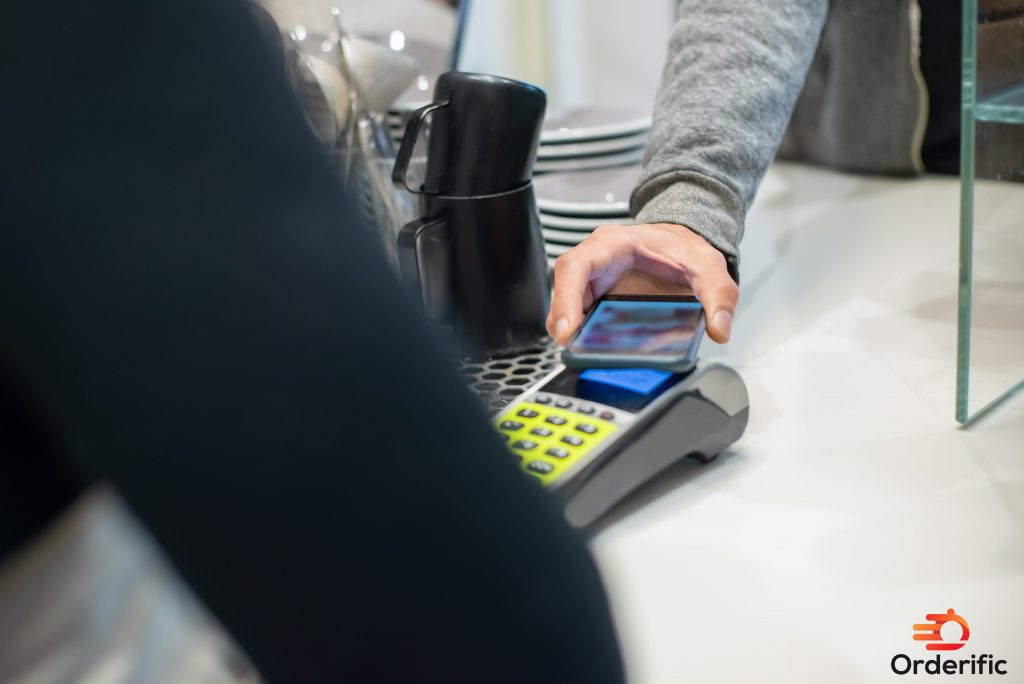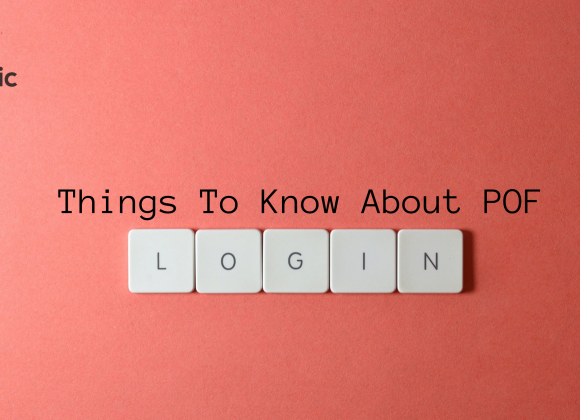Introduction
Engaging in financial transactions is part of our day-to-day lives. Whether it’s PayPal transfer limit to a business account, settling a payment with a debit card, or navigating an international money transfer, understanding the limitations is crucial. A widely used payment method, PayPal has specific transfer limits that can impact these transactions. From using a PayPal account for instant transfers to considering the implications of a PayPal fee, it’s crucial to grasp how these limits affect your financial flow. This guide delves deep into the minimum and how they vary for services like Cash App, Google Pay, and Apple Pay. Join us as we demystify the complexities of PayPal’s transfer limit, aiding you in optimizing your transactions and finances.
Why Does PayPal Have Transfer Limits?
1. Safety Against Fraudulent Activities On Your PayPal Account
PayPal establishes transfer limits primarily to safeguard against fraudulent activities on your account. These limits apply regardless of initiating an instant transfer, sending money internationally, or moving funds from your PayPal account to your bank account. For instance, the PayPal instant transfer limit, which allows immediate access to funds, is based on the security level of your PayPal account. Similarly, services like Cash App, Google Pay, and Apple Pay have unique transfer limits.
These constraints may also impact transferring money from your PayPal balance to a business account or credit card. The nuances of the PayPal fee structure, intricately linked to their transfer limit, can affect the total amount of money you can send or receive. Even your credit card, whether it’s American Express or any other, might have a bearing on these limits.
Understanding the PayPal transfer limits, including the limits for debit card transactions and prepaid card loads, is essential for efficient money management. While these limitations may seem cumbersome at first, they’re designed to provide a secure, efficient payment method. By comprehending these limits, you can improve your transaction flow, optimize your PayPal payments, and ensure that your PayPal transfers are as seamless and swift as possible.
2. Prevention Of Unauthorized Access
The second primary rationale behind PayPal’s transfer limits is the prevention of unauthorized access to your account. By setting a threshold on the amount you can transfer at a time, PayPal ensures that your account remains protected against potential threats of cyber theft. If a suspicious transaction exceeds the set limit, PayPal’s system will promptly flag it, thus preventing any unauthorized fund transfers.
This protective measure is similar to other digital payment services like Google Pay, Apple Pay, or Cash App, each with its own rules and transfer limits. This safeguards your account and maintains the integrity of your financial transactions.
Moreover, it’s worth noting that these transfer limits aren’t just arbitrary figures. They are determined based on your account’s verification status and your history of transactions. Users with a verified account and a clean transaction record usually enjoy higher transfer limits. This verification process involves linking your PayPal account to a bank account or credit card, which further adds a layer of security to your transactions.
3. Enhanced Compliance Management
PayPal’s transfer limits also play a vital role in ensuring regulatory compliance. Compliance with financial regulations is critical to any financial institution’s operations, and PayPal is no exception. These regulations are designed to prevent money laundering, tax evasion, and other illicit economic activities. By imposing transfer limits, PayPal can monitor large, potentially suspicious transactions more effectively, thus complying with regulatory requirements.
For example, let’s say there’s a sudden increase in your PayPal account’s transaction volume or a significant transaction that exceeds your regular transfer limit. In such cases, PayPal may temporarily hold the trade for additional inspections to ensure it complies with the applicable financial regulations.
The verification process, fundamental to increasing your transfer limits, also plays into these compliance measures. When you verify your account by linking it to a bank account or a credit card, PayPal is better equipped to track and validate the source and destination of your funds, ensuring proper compliance management. This regulatory adherence guarantees that your transactions are legitimate, contributing to a safer and more trustworthy financial environment.
4. Balancing User Needs And Risks
PayPal balances user needs and risks by implementing transfer limits. The goal is to strike a balance between enabling smooth transactions and mitigating the risks of cybercrime. The limits are barely noticeable for regular users, but for larger sellers or businesses, this can pose challenges. Yet, these limits are not set in stone. PayPal permits users to apply for higher limits for their accounts. This process involves demonstrating a consistent record of secure and compliant transactions and account verification.
Verification requires linking to a bank account or credit card, providing additional documentation, and completing an identity confirmation. Once verified, most users see an immediate increase in their PayPal transfer limits. This flexible approach allows PayPal to cater to the varying needs of its vast user base, from individuals to small businesses to multinational corporations. This balance of user convenience and risk management makes PayPal a trusted name in the world of digital transactions.
While PayPal transfer limits can initially seem restrictive, they are crucial in ensuring safe, compliant, and efficient transactions for all users. By understanding these limits and the processes to increase them, you can better optimize your financial transactions, whether you’re an individual transferring funds to a friend or a business managing an extensive portfolio of payments.
5. Strengthening Consumer Confidence
The fifth reason underlying PayPal’s transfer limits is to strengthen consumer confidence. By enforcing these limits, PayPal ensures a safe platform for its users, thereby promoting trust and reliability in its services. Just like Google Pay, Cash App, and Apple Pay, PayPal’s transfer limits serve to demonstrate their commitment to security and their customers’ well-being. This reinforces the platform’s credibility and assures users that their transactions are being carried out in a secure environment.
Also, the limits imposed by PayPal are not arbitrary. They are carefully calculated based on your account’s verification status and your transaction history. A user with a verified account and a straightforward transaction record tend to have higher transfer limits. This verification process, which involves linking your PayPal account to a bank account or credit card, enhances the security of your transactions.
In essence, PayPal’s transfer limits protect your financial transactions from potential fraud and unauthorized access, ensure regulatory compliance, balance user needs with risks, and strengthen consumer confidence. Understanding these limits allows you to optimize your financial transactions, making your PayPal transfers seamless and efficient.
What Is The Minimum & Maximum PayPal Transfer Limit?

Minimum PayPal Transfer Limits
The minimum transfer limit for PayPal largely depends on the verification status of your account and your history of transactions. You can send up to $500 per month for a new and unverified PayPal account. This limit is tentatively set to ensure the platform’s security and protect users from fraud. However, this limit is flexible and can be increased through verification. This involves linking your PayPal account to a bank or credit card and confirming your identity. Once your account has been verified, the minimum transfer limit is usually lifted, allowing you to send more significant amounts. Understanding these minimum limits can help you manage your transactions better and make your PayPal transfers more efficient. Please note that these limits might vary from region to region and are subject to change according to PayPal’s policies.
Maximum Transfer Limit
The maximum transfer limit on PayPal depends on various factors, including your account’s verification status, your transaction history, and whether you have a personal or business account. For instance, an unverified personal account may have a limit of $500 per month, but a verified personal account can send up to $60,000, but no more than $10,000 in a single transaction. Business accounts, on the other hand, can have even higher limits. However, it’s important to note that these limits can vary based on PayPal’s policies and the region you’re in. If a user needs to send larger amounts, they can request to have these limits increased by providing additional verification and maintaining a history of secure, compliant transactions. Understanding these maximum limits can help you effectively optimize your transactions and ensure that your PayPal transfers are as swift and efficient as possible.
PayPal Instant Transfer Limits For Debit Cards
Tier I – Basic Access
With a Tier I – Basic Access status, PayPal’s instant transfer limits for debit cards are relatively restrictive. Users with this status can send up to $5,000 in any rolling 7-day period, but no more than $4,000 in any single transaction. This limit is put in place to ensure the security of the user’s account and to curtail any potential fraudulent activities. New users or those with unverified accounts typically fall under this tier. The verification process for upgrading your status involves linking your PayPal account to a bank account or credit card and confirming your identity.
Once verified, your status can be upgraded to Tier II – High Access, which provides you with more flexibility in managing your transactions. Understanding the basic limit for PayPal’s instant transfers can help you plan your transactions better and enhance the efficiency of your PayPal transfers. Please note that these limits may vary depending on your location and PayPal’s policies.
Tier II – Moderate Access
Once a user has upgraded to Tier II – Moderate Access, they’ll notice a significant increase in PayPal’s instant transfer limits for debit cards. Under this level, users can now send up to $15,000 in any rolling 7-day period and as much as $10,000 in any single transaction. This upgrade provides users with greater flexibility for their transactions and reduces the limitations that may have previously hindered larger payments. The process to reach this level requires verification, which includes linking to a bank account or credit card and confirming your identity. This verification process assures PayPal of your credibility, thus allowing for this increased transfer limit. Users should remember that these limits can fluctuate based on region and PayPal’s policies. Being aware of these transfer limits at the Tier II level can assist users in more effectively managing and optimizing their transactions.
Tier III – Highest Access
When a PayPal user reaches Tier III – Highest Access, the instant transfer limits for debit cards increase significantly. At this level, you can send up to $50,000 in any rolling 7-day period, with a limit of $10,000 for any single transaction. This upgrade gives users even more flexibility and room for larger transactions. Attaining this level requires stringent verification, including linking your PayPal account to a bank account or credit card, and providing additional documentation. After this process, PayPal reassures you of your credibility, allowing for such extensive transfer limits. These limits, however, are subject to PayPal’s policies and may vary based on your location. Understanding these transfer limits at the Tier III level can help users effectively manage their transactions, optimizing their PayPal transfers for efficiency and convenience.
How To Lift PayPal Business Transfer Limits?
Verify Your Account
One of the initial steps to lifting your PayPal business transfer limits is to verify your account. Verification is a simple but crucial process that PayPal uses to ensure the security of its users. It involves linking your PayPal account to a bank account or credit card and confirming your identity. This not only adds a layer of security to your transactions but also provides PayPal with the assurance of your credibility as a user. Once your account has been verified, you will typically see an immediate increase in your transfer limits.
This process is integral for both personal and business accounts, allowing for more flexibility in managing transactions. However, it’s important to note that these limits can vary based on your location and are subject to change according to PayPal’s policies. By understanding this verification process, you can optimize your financial transactions, leading to a more efficient and seamless experience when using PayPal for your business.
Link A Confirmed Bank Account
Linking a confirmed bank account to your PayPal account is another effective way to lift your PayPal business transfer limits. This step not only adds an extra layer of security to your transactions but also assists PayPal in validating your identity and the legitimacy of your business operations. Once your bank account is linked and confirmed, PayPal gains more trust in your credibility as a business, increasing your transfer limits. This, in turn, provides more flexibility and ease in managing larger or more frequent transactions. Just like the previous verification step, these limits can fluctuate based on your location and PayPal’s varying policies. Therefore, having a clear understanding of the impact of linking a confirmed bank account on your transfer limits can greatly optimize your transaction processes, leading to a more efficient and convenient business experience with PayPal.
Build Positive Feedback
Building positive feedback is another key to lifting your PayPal business transfer limits. This involves regularly engaging in secure and compliant transactions, which establishes a positive transaction history. As PayPal observes your business operations over time, a positive record can reassure the platform of your credibility, potentially leading to an increase in your transfer limits. This is particularly important for businesses engaging in high-value transactions or needing to transfer large sums frequently. Robust positive feedback can lead to greater flexibility and efficiency in managing your PayPal transfers, ultimately optimizing your business transactions. Remember, these limits can vary due to location and PayPal’s policies. Thus, understanding the impact of positive feedback on your transfer limits can help in maximizing your PayPal experience.
Maintain Good Standing
Maintaining a good standing with PayPal is pivotal to lifting your business transfer limits. This process involves avoiding disputes, chargebacks, and fraudulent transactions – all of which reflect negatively on your business profile. By ensuring your transactions are compliant and secure, you foster trust with PayPal, which can result in increased transfer limits. This is especially beneficial for businesses dealing with large-scale transactions, providing more leeway and flexibility. However, these limits can fluctuate depending on your region and PayPal’s policies. Understanding this, and maintaining good standing with PayPal, can help optimize your business transactions for maximum efficiency and convenience.
Demonstrate Steady Sales Growth
Demonstrating steady sales growth is an effective strategy for lifting your PayPal business transfer limits. PayPal takes into account the growth and stability of your business when determining your transfer limits. Thus, showing a consistent increase in sales over time can positively impact your transfer limits. This growth not only signifies a thriving business but also reassures PayPal of its credibility and ability to engage in larger transactions. However, remember these limits can be influenced by your location and PayPal’s policies. By understanding the importance of steady sales growth and its impact on your transfer limits, you can better manage your transactions, improving the efficiency and convenience of your PayPal transfers.
How To Verify My PayPal Business Account?
Verifying your PayPal Business account is a straightforward process that contributes to lifting your transfer limits. Initially, you need to link your business’s bank account or credit card to your PayPal account. In the ‘Wallet’ section, click on the ‘Link a card or bank’ option and follow the on-screen instructions. Post-linking, you need to verify your bank account. PayPal will make two small deposits into your account. Once you see these deposits, log back into PayPal and enter the exact amounts to confirm your account. For credit cards, PayPal charges a small amount, which is refunded after you enter the four-digit code from your card statement.
This process not only provides an additional layer of security but also serves to authenticate your identity and business operations. Once verified, typically, your transfer limits increase, allowing for easier management of larger transactions. However, these limits vary based on location and PayPal policies. Understanding this verification process aids in optimizing your transactions, ensuring efficient use of PayPal for your business needs.
Conclusion
In conclusion, understanding and navigating the intricacies of PayPal transfer limits is crucial for optimizing your transactions, whether for personal or business use. With different tiers offering varying transfer limits and the possibility to lift these limits through verification, linking a confirmed bank account, building positive feedback, maintaining good standing, and demonstrating steady sales growth, you can leverage PayPal to its fullest potential for your financial needs. However, remember that these limits are subject to regional variations and PayPal’s policies. Equipped with this knowledge, you’re set to make your PayPal transfers more efficient and convenient.
Interested in learning more and optimizing your digital transactions? Orderific offers comprehensive solutions to streamline your online transaction processes. Don’t hesitate – book a demo with us today and elevate your business’s digital transaction efficiency!
FAQs
What is the PayPal transfer limit and how is it determined?
The transfer limit is the maximum amount you can transfer, and it’s determined by factors like your account’s verification status and your transaction history.
Are there different transfer limits for different types of PayPal accounts?
Yes, different types of accounts have different transfer limits.
Can I request a higher transfer limit on my PayPal account?
Yes, by verifying your account and maintaining a positive transaction history, you can request a higher transfer limit on your account.
How does verifying my PayPal account impact transfer limits?
Verifying your account can significantly increase your transfer limits.
Are there any fees associated with exceeding PayPal transfer limits?
Exceeding PayPal transfer limits is not possible; transactions that exceed the limit will not be processed.













